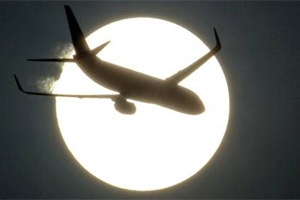Airline companies are witnessing a decline in their yields — revenue per average seat kilometre (RASK) — as they are reducing passenger fares to increase market share and passenger load factor. The result is that almost all carriers have seen decline in their top line growth.
For perspective: Air India dropped ticket prices by 22% year-on-year in the April to June period which saw its domestic yields declining by 14-16% during the quarter. The RASK, which was around Rs 5.83 in April-June, 2015, is believed to have come down to levels of Rs 4.99 currently.
According to a senior executive of Air India, the ticket prices decreased in the last four months while the cost has increased in the form of increased aviation turbine fuel (ATF) prices and airport charges.
Similarly, Indigo Airlines — the largest airline by market share — saw its yields plummet by 12.7% y-o-y to Rs 3.62 in the April-June quarter from Rs 4.15 a year back. Drop in yields along with the increased fuel expenses and aircraft rentals saw the airlines profits drop by 7.46% y-o-y to Rs 591.94 crore during the same time.
“We have delivered another profitable quarter. However, the profitability was lower primarily because of the competitive fare pressure,” said Aditya Ghosh, president and whole time director, Indigo, after the company declared its April-June earnings.
Jet Airways also experienced decrease in yields to Rs 4.22 in the first quarter compared to Rs 4.47 in the corresponding quarter in FY16. The domestic revenues of the airline decreased by 4.25% y-o-y to Rs 2,104.70 crore.
“Due to the intense competitive environment, industry yields were under pressure in Q1 and the trend is expected to continue in Q2. At Jet Airways, we continue to focus on our key priorities areas of customer satisfaction, network optimisation and driving operational efficiencies,” said Naresh Goyal, chairman, Jet Airways, after the company’s earnings last week.
On the three of the busiest route in the country — Delhi-Mumbai, Delhi-Bengaluru and Delhi-Chennai — ticket prices offered by the full service carriers like Air India, Jet Airways and Vistara are almost the same or a tad higher than those of low cost carriers like SpiceJet, Indigo and GoAir.
Significant reduction in air fares by SpiceJet and GoAir prompted Indigo, Air India and Vistara to join the bandwagon. Air India has started to offer tickets at an equivalent price of a second class AC coach ticket of Rajdhani Express.
While average fares have come down by almost 10-12%, the ATF prices in the last four month (March-July) has increased by 27%. Fuel expenses constitute 35-40% of the operational cost of an airline.
“The fare war has gone into the peak period of travel this year. Air fares in May which is typically the strongest month of travel has seen drop of 25-35% depending on the routes. Low oil prices and excess capacity are the principle reasons behind this,” Vistara CEO Phee Teik Yeoh had told FE in an interview.
According to analysts, the pressure on yields will continue to remain in the second quarter of the current fiscal as input cost keeps increasing as result of a spike in jet fuel prices and ticket prices are also expected remain subdued. This may also impact the profitability of the airlines in the long term.
